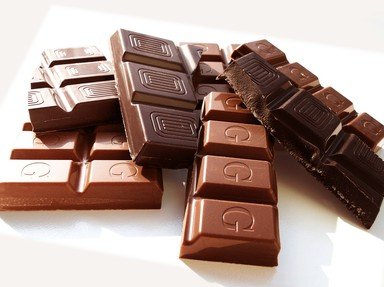Quiz Answer Key and Fun Facts
1. Which of the following four choices is chocolate supposed to benefit?
2. The first recorded use of chocolate dates back to 1,000 BC in central and South America. The people from this area made it into a drink known as cacahuatl or, in some cases, as oxcolatl. Bearing in mind the taste of dark chocolate, what do you think this translates into in English?
3. What did the ancient Mayan and Aztec priests do with cacao seeds?
4. Still leading the way in the 21st century, which area in the world produces most of the world's cocoa?
5. One of the products of the cacao bean contains more calcium, copper, magnesium, sodium and zinc than its other products. Which one is this?
6. Is it true that cocoa butter is also known as theobroma oil?
7. The Aztec word cacahuatl for the cold cacao drink they drank was quickly replaced with the alternative choice of oxcolatl by the Spaniards. Why did they change it so quickly?
8. Sometimes store bought chocolate comes adorned with peculiar looking white smears or dots. What is the cause of this?
9. In parts of early South American nations, people also used the white pulp around the cacao seed for a special purpose. What was this?
10. You'll never believe this, but what was added to the early Mesoamerican drink of chocolate to enhance its flavour?
Source: Author
Creedy
This quiz was reviewed by FunTrivia editor
WesleyCrusher before going online.
Any errors found in FunTrivia content are routinely corrected through our feedback system.


